John Kamalu
Nemotron-H: A Family of Accurate and Efficient Hybrid Mamba-Transformer Models
Apr 10, 2025Abstract:As inference-time scaling becomes critical for enhanced reasoning capabilities, it is increasingly becoming important to build models that are efficient to infer. We introduce Nemotron-H, a family of 8B and 56B/47B hybrid Mamba-Transformer models designed to reduce inference cost for a given accuracy level. To achieve this goal, we replace the majority of self-attention layers in the common Transformer model architecture with Mamba layers that perform constant computation and require constant memory per generated token. We show that Nemotron-H models offer either better or on-par accuracy compared to other similarly-sized state-of-the-art open-sourced Transformer models (e.g., Qwen-2.5-7B/72B and Llama-3.1-8B/70B), while being up to 3$\times$ faster at inference. To further increase inference speed and reduce the memory required at inference time, we created Nemotron-H-47B-Base from the 56B model using a new compression via pruning and distillation technique called MiniPuzzle. Nemotron-H-47B-Base achieves similar accuracy to the 56B model, but is 20% faster to infer. In addition, we introduce an FP8-based training recipe and show that it can achieve on par results with BF16-based training. This recipe is used to train the 56B model. All Nemotron-H models will be released, with support in Hugging Face, NeMo, and Megatron-LM.
MIND: Math Informed syNthetic Dialogues for Pretraining LLMs
Oct 15, 2024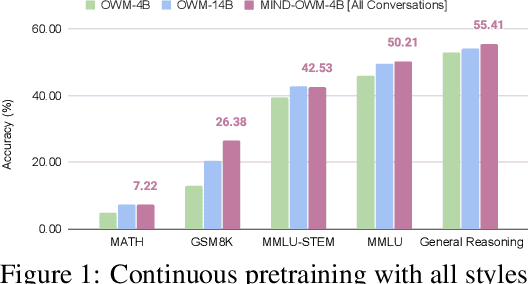

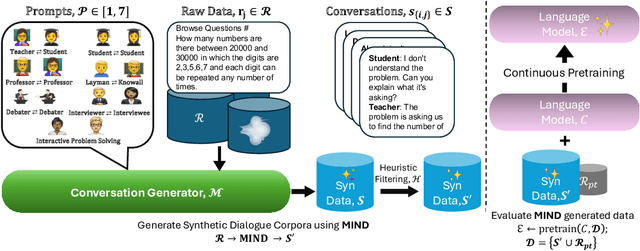

Abstract:The utility of synthetic data to enhance pretraining data quality and hence to improve downstream task accuracy has been widely explored in recent large language models (LLMs). Yet, these approaches fall inadequate in complex, multi-hop and mathematical reasoning tasks as the synthetic data typically fails to add complementary knowledge to the existing raw corpus. In this work, we propose a novel large-scale and diverse Math Informed syNthetic Dialogue (MIND) generation method that improves the mathematical reasoning ability of LLMs. Specifically, using MIND, we generate synthetic conversations based on OpenWebMath (OWM), resulting in a new math corpus, MIND-OWM. Our experiments with different conversational settings reveal that incorporating knowledge gaps between dialog participants is essential for generating high-quality math data. We further identify an effective way to format and integrate synthetic and raw data during pretraining to maximize the gain in mathematical reasoning, emphasizing the need to restructure raw data rather than use it as-is. Compared to pretraining just on raw data, a model pretrained on MIND-OWM shows significant boost in mathematical reasoning (GSM8K: +13.42%, MATH: +2.30%), including superior performance in specialized knowledge (MMLU: +4.55%, MMLU-STEM: +4.28%) and general purpose reasoning tasks (GENERAL REASONING: +2.51%).
Nemotron-4 340B Technical Report
Jun 17, 2024



Abstract:We release the Nemotron-4 340B model family, including Nemotron-4-340B-Base, Nemotron-4-340B-Instruct, and Nemotron-4-340B-Reward. Our models are open access under the NVIDIA Open Model License Agreement, a permissive model license that allows distribution, modification, and use of the models and its outputs. These models perform competitively to open access models on a wide range of evaluation benchmarks, and were sized to fit on a single DGX H100 with 8 GPUs when deployed in FP8 precision. We believe that the community can benefit from these models in various research studies and commercial applications, especially for generating synthetic data to train smaller language models. Notably, over 98% of data used in our model alignment process is synthetically generated, showcasing the effectiveness of these models in generating synthetic data. To further support open research and facilitate model development, we are also open-sourcing the synthetic data generation pipeline used in our model alignment process.
Nemotron-4 15B Technical Report
Feb 27, 2024



Abstract:We introduce Nemotron-4 15B, a 15-billion-parameter large multilingual language model trained on 8 trillion text tokens. Nemotron-4 15B demonstrates strong performance when assessed on English, multilingual, and coding tasks: it outperforms all existing similarly-sized open models on 4 out of 7 downstream evaluation areas and achieves competitive performance to the leading open models in the remaining ones. Specifically, Nemotron-4 15B exhibits the best multilingual capabilities of all similarly-sized models, even outperforming models over four times larger and those explicitly specialized for multilingual tasks.
FP8 Formats for Deep Learning
Sep 12, 2022
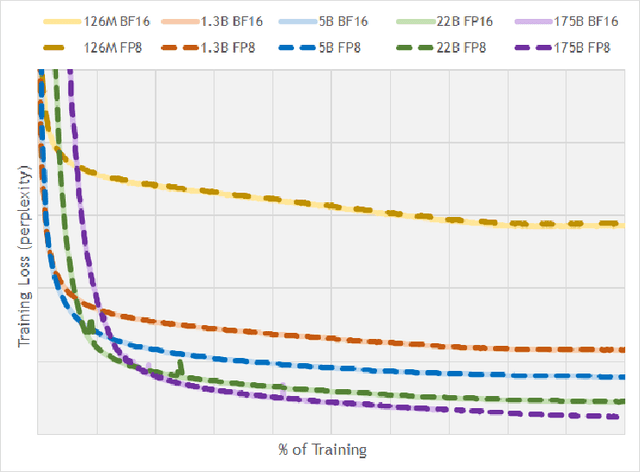
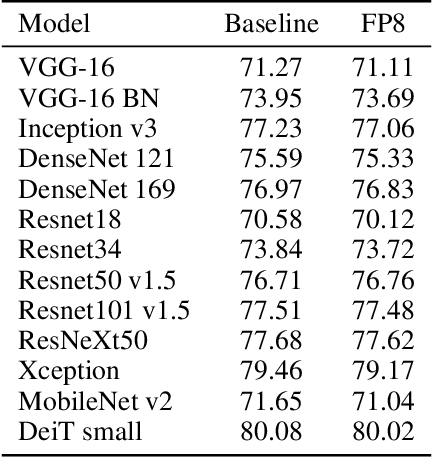
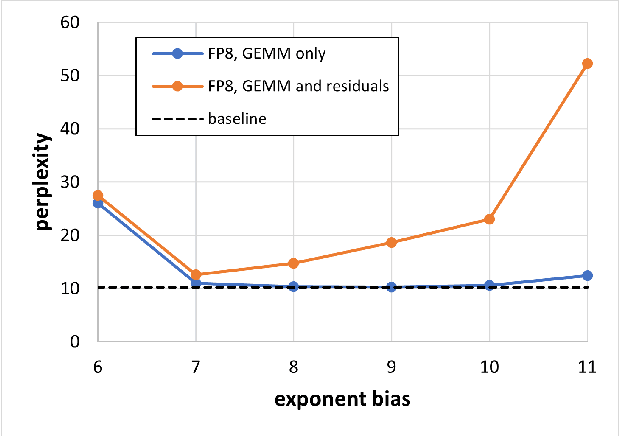
Abstract:FP8 is a natural progression for accelerating deep learning training inference beyond the 16-bit formats common in modern processors. In this paper we propose an 8-bit floating point (FP8) binary interchange format consisting of two encodings - E4M3 (4-bit exponent and 3-bit mantissa) and E5M2 (5-bit exponent and 2-bit mantissa). While E5M2 follows IEEE 754 conventions for representatio of special values, E4M3's dynamic range is extended by not representing infinities and having only one mantissa bit-pattern for NaNs. We demonstrate the efficacy of the FP8 format on a variety of image and language tasks, effectively matching the result quality achieved by 16-bit training sessions. Our study covers the main modern neural network architectures - CNNs, RNNs, and Transformer-based models, leaving all the hyperparameters unchanged from the 16-bit baseline training sessions. Our training experiments include large, up to 175B parameter, language models. We also examine FP8 post-training-quantization of language models trained using 16-bit formats that resisted fixed point int8 quantization.
Crowd-Sourced Road Quality Mapping in the Developing World
Dec 01, 2020
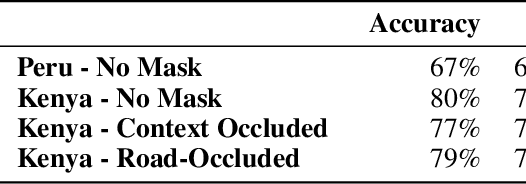
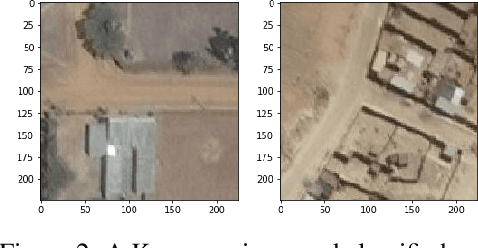
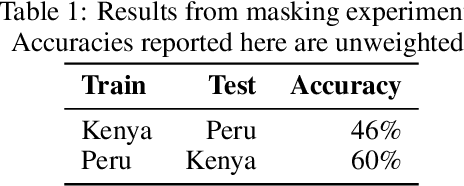
Abstract:Road networks are among the most essential components of a country's infrastructure. By facilitating the movement and exchange of goods, people, and ideas, they support economic and cultural activity both within and across borders. Up-to-date mapping of the the geographical distribution of roads and their quality is essential in high-impact applications ranging from land use planning to wilderness conservation. Mapping presents a particularly pressing challenge in developing countries, where documentation is poor and disproportionate amounts of road construction are expected to occur in the coming decades. We present a new crowd-sourced approach capable of assessing road quality and identify key challenges and opportunities in the transferability of deep learning based methods across domains.
Road Mapping in Low Data Environments with OpenStreetMap
Jun 14, 2020


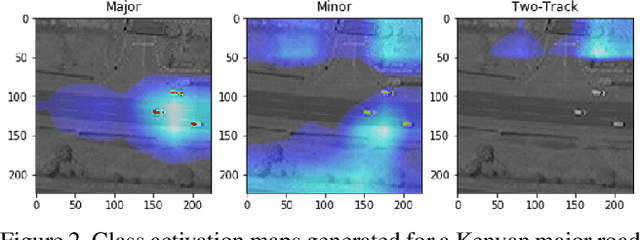
Abstract:Roads are among the most essential components of any country's infrastructure. By facilitating the movement and exchange of people, ideas, and goods, they support economic and cultural activity both within and across local and international borders. A comprehensive, up-to-date mapping of the geographical distribution of roads and their quality thus has the potential to act as an indicator for broader economic development. Such an indicator has a variety of high-impact applications, particularly in the planning of rural development projects where up-to-date infrastructure information is not available. This work investigates the viability of high resolution satellite imagery and crowd-sourced resources like OpenStreetMap in the construction of such a mapping. We experiment with state-of-the-art deep learning methods to explore the utility of OpenStreetMap data in road classification and segmentation tasks. We also compare the performance of models in different mask occlusion scenarios as well as out-of-country domains. Our comparison raises important pitfalls to consider in image-based infrastructure classification tasks, and shows the need for local training data specific to regions of interest for reliable performance.
 Add to Chrome
Add to Chrome Add to Firefox
Add to Firefox Add to Edge
Add to Edge